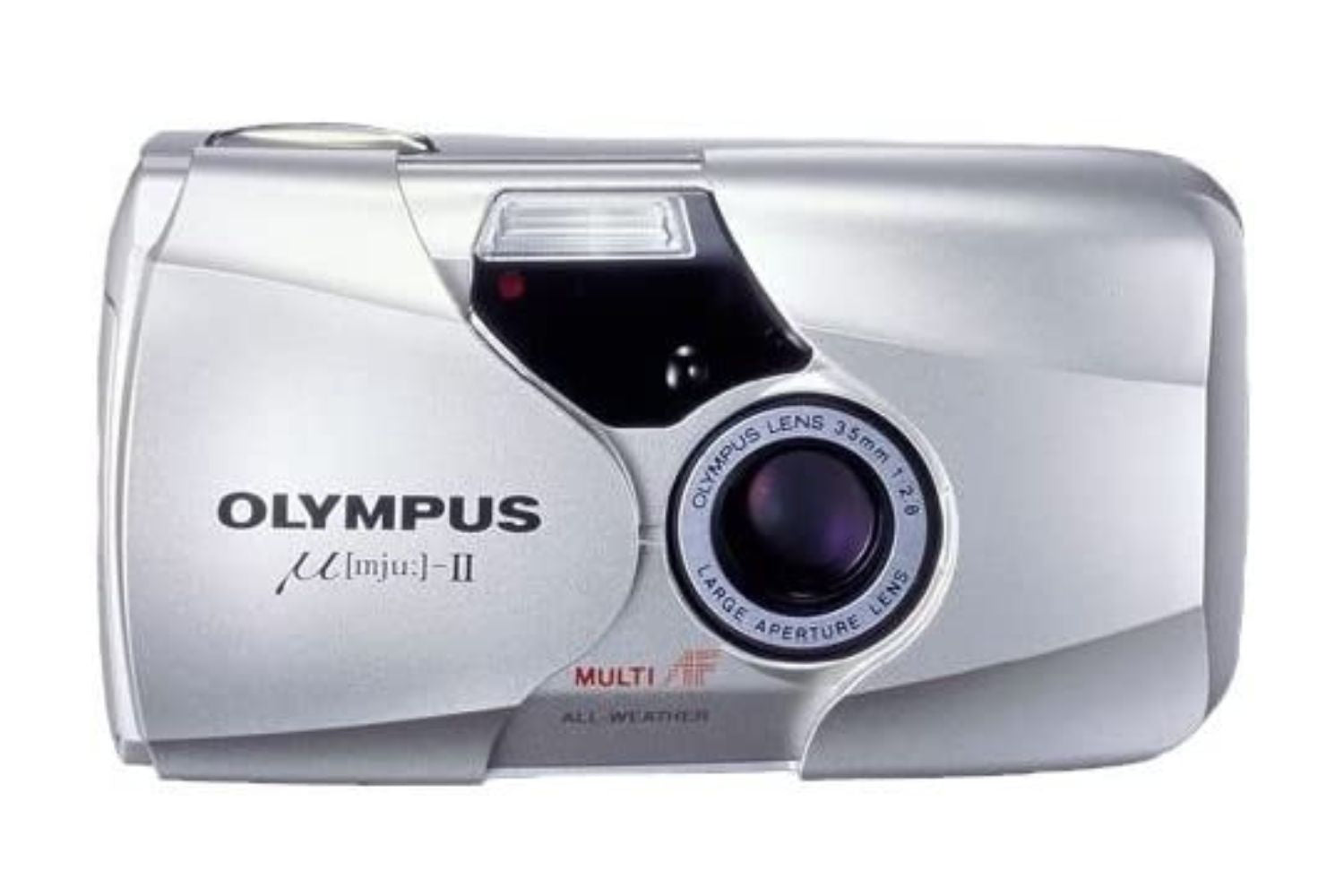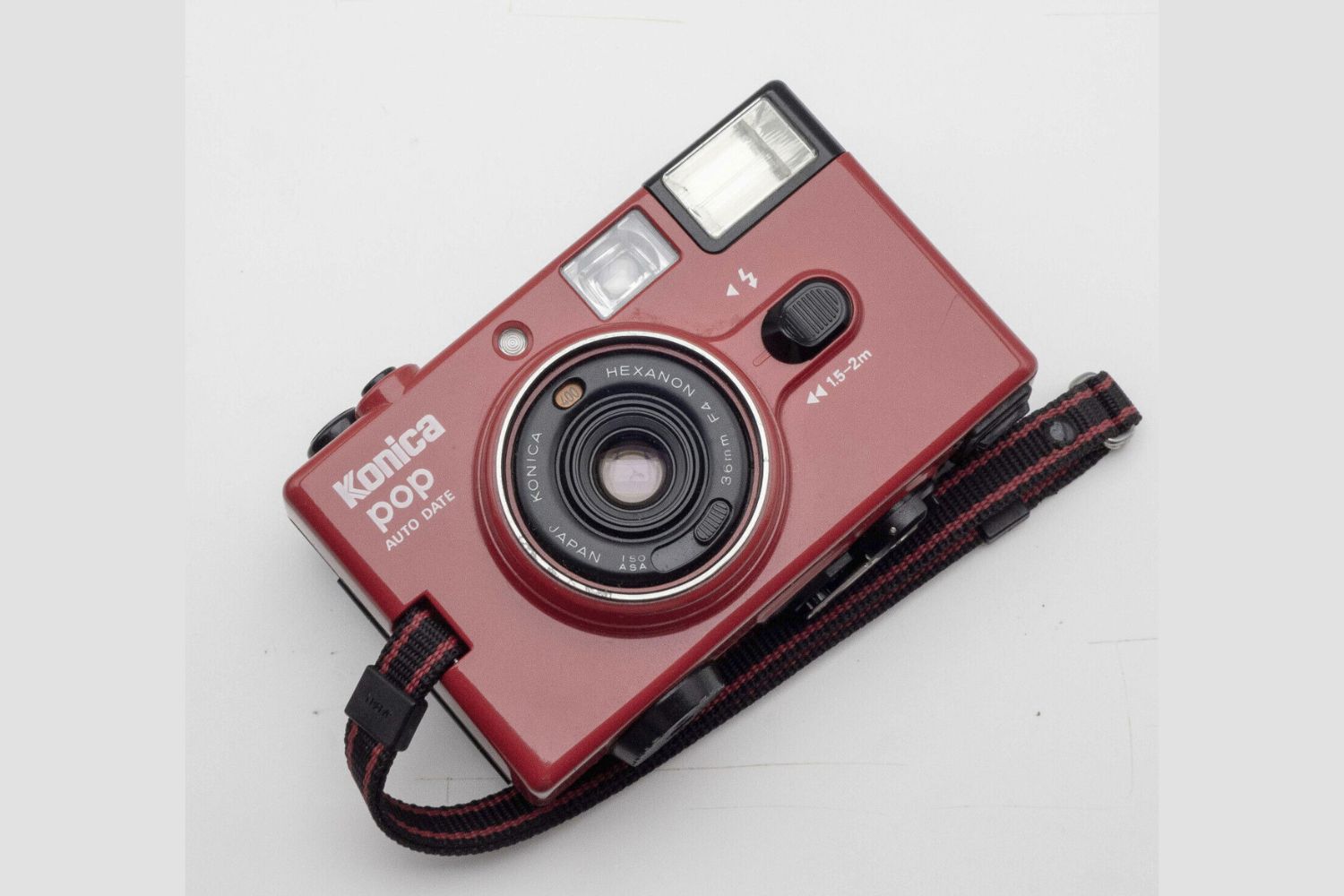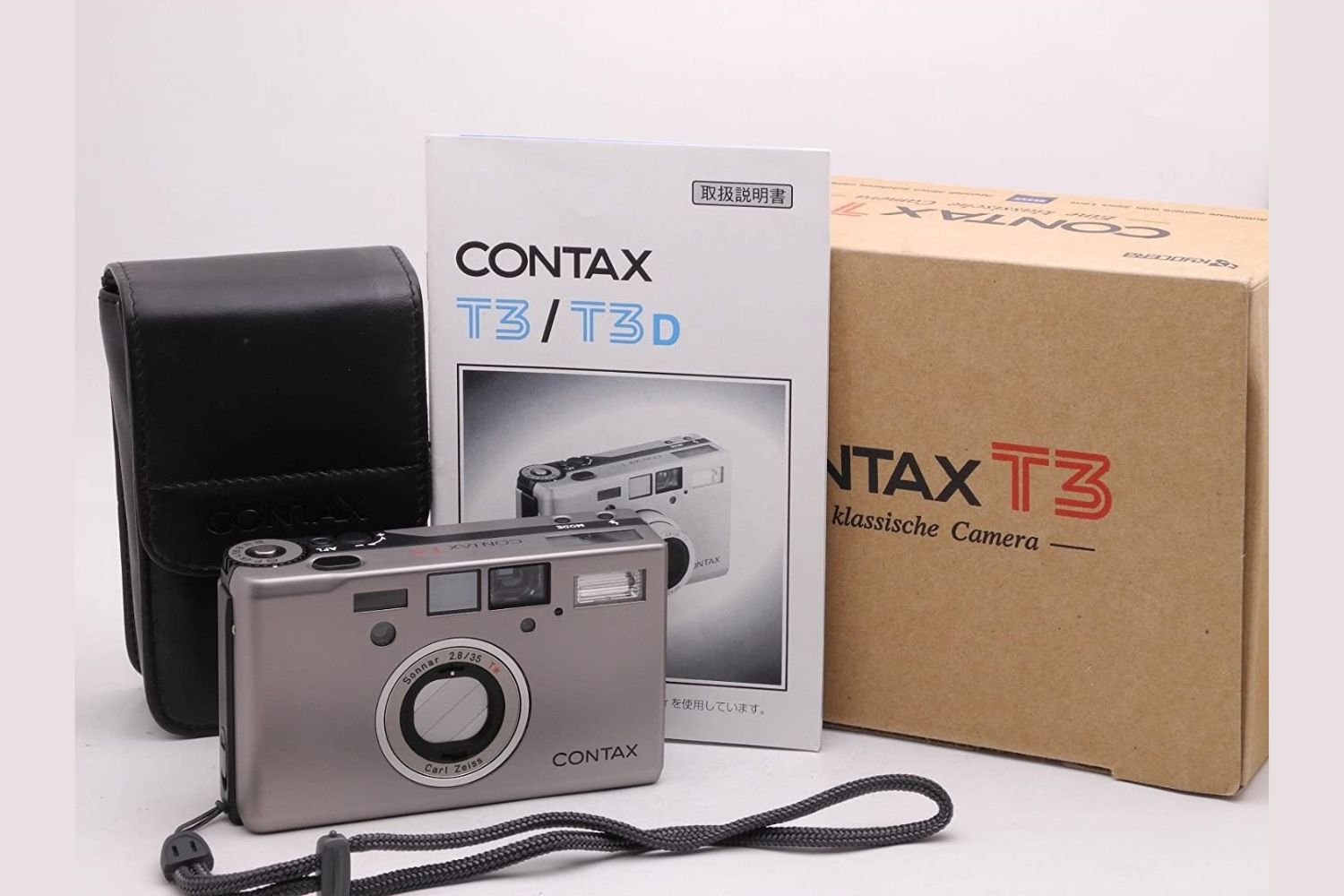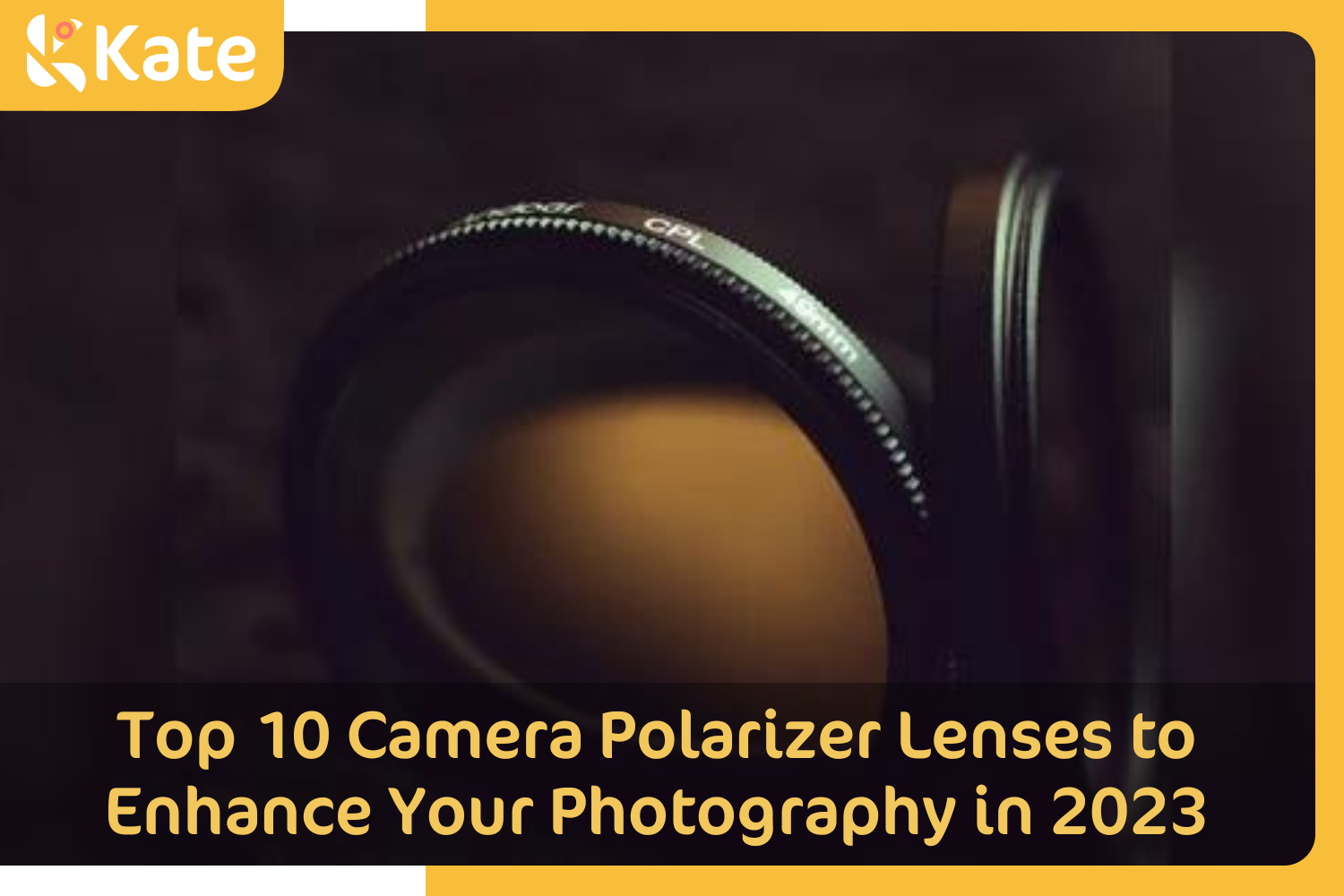2024 Buying Guide: 15 Best Point and Shoot Film Cameras

Point and shoot film cameras cater to a very niche segment in the camera market. They are sandwiched between smartphones and the commercial interchangeable lens cameras (both digital and film). They offer photographers the opportunity to experience the beauty, the purity and the gratification of using film as a shooting medium without having to get into a full blown manual shooting mode such as shooting with a SLR.
What is a Point and Shoot Film Camera?
Point and shoot film cameras, as the name suggests, are essentially film cameras but one with a fixed lens and more often than not a fixed focal length. This focal length tends to vary between 28mm and 40mm, which essentially puts the lens in a wide angle category. With these cameras all you have to do is point your camera, compose and press the shutter release. The camera does the rest.

Photo by Parth Shah on Unsplash
A majority of the cameras come with automatic exposure modes. That means the aperture and the shutter speed is determined by the camera itself. The speed of the film stock used is the third parameter in the exposure triangle, which you determine when you choose the film. So, if you load a 100 ASA film you will get excellent images in bright light. But the same film stock will be difficult to work with when you are shooting in low light conditions. So, you have to choose the appropriate film speed depending on the light.
With film the only way you can control the ISO or the sensitivity of the film is when you employ push or pull technique. That is, you dial in a higher or lower ISO number than the speed of the film and then adjust the remaining two exposure parameters (aperture and shutter speed) to adjust the exposure accordingly.
Why You Should Pick Point and Shoot Film Camera?
-
Introduction to shooting in film - You are going to use film stock as the medium to shoot your images, which is what the world used before digital photography cameras. It is considered by many as the purer form of photography compared to digital.
-
Auto Functions - These cameras give you the option to focus on the composition while taking care of the exposure details. With automatic exposure all you have to do is make sure you load the right film and then focus on the composition. The camera does everything else.
-
Affordability - While I don’t put too much faith in the pricing part because in my experience I have seen that inexpensive equipment tends to offer mixed results. Some are beyond good in terms of return on investment while others are complete junk and I had to throw them away. By and large point and shoot film cameras are affordable and offer good return on investment. You get to experience how to shoot with film stock without having to invest a lot of money on high-end SLRs.
-
Beginner friendly - One of the major reasons these cameras are so beginner friendly is because there is very limited manual options on these cameras. You just point and shoot. Having said that, if you have aspirations for professional photography these cameras are not going to provide you with all the features that you need. You need to go for a SLR camera. On the flip side though, you have to buy a roll of film every time you wish to take a photo, and learn how to load the film into your camera.
-
Quiet Operation - A major advantage of using these point and shoot film cameras is that they don't have a reflex mirror inside them, like the way you have inside an SLR camera. That means when you press the shutter release these cameras don't make a lot of clanking sound. The advantage is that you can shoot candid film photos inside places where you cannot use a traditional camera such as an SLR. A church wedding, a library or even a quiet get together are some examples where these cameras are useful.
- Portability - Portability is definitely a major USP of these cameras. They are small often weighing 100 grams or thereabouts. As such you can simply toss one in your daypack or handbag and you are good to go.

Photo by Keenan Hastings on Unsplash
Major Points of Differences Between Point and Shoot Film Cameras vs. DSLR Cameras
-
Experience Level
-
Manual Settings
Point and shoot cameras are designed for photographers who do not have the skills or the interest to manually operate a camera when taking a picture. Point and shoot film cameras are designed to simplify things, something that DSLRs and SLRs don't do. In order to fully utilize the features of a DSLR or a SLR you will need to understand the manual operation of the camera.
-
Size of Lens
Point and shoot film cameras invariably have a fixed lens with a fixed focal length. That is both a positive and a negative factor. On DSLRs and SLRs, the interchangeable lens option allows you to switch lenses as per the subject you are photographing. With fixed focal length cameras you don’t have that option and that can be a limiting factor. On the other hand, with a fixed focal length you don’t have to dabble with the zoom ring of the camera and that means you have more time to focus on the composition.
The built-in lens on point and shoot film cameras are much smaller than the interchangeable lens systems. That is an advantage when you want to have a lower footprint. These cameras easily fit into a small bag or even a purse.
-
Interchangeable Lenses
Interchangeable lenses have a huge advantage over fixed lenses. The ecosystem of interchangeable lenses has been designed so that users can take advantage of different lenses and the different perspectives that come with it. With a fixed lens like the one on a point and shoot film camera you cannot change the focal length and therefore cannot re-tune your perspective for different subjects. With interchangeable lenses you can swap a standard lens for a telephoto when shooting wildlife. Again, when shooting product photos you can swap the telephoto lens for a macro that offers you better focusing control at close distances.
-
Price
Point and shoot film cameras are way inexpensive than SLRs and DSLRs. However, do keep in mind that these cameras are not as versatile when it comes to shooting professional level photos. I reiterate, if you have professional aspirations invest in a DSLR.
-
Portability
Point and shoot film cameras are lighter, smaller and compact. These cameras can easily tuck inside a small bag or a daypack. On the other hand, DSLRs and SLRs are bigger and bulkier.These days mirrorless cameras have become the new standard. Mirrorless camera systems don’t have a reflex mirror inside them and the flange distance is smaller, leading to smaller, more compact and lightweight bodies
-
Post-processing
Film is not as versatile when it comes to using advanced post-processing techniques as compared to shooting in digital. With point and shoot film cameras you will essentially be shooting in film.
15 Best Point and Shoot Film Camera
1.Olympus Mju II

Image Credit: amazon.com
Specifications
- Lens: 35mm
- Elements: 4 elements arranged in 4 groups
- Aperture: f/2.8 fixed
- Minimum focusing distance: 0.35m
- Exposure control: Automatic
- Focus: Autofocus
- Dimensions: 4.25 x 2.32 x 1.45 inches without protrusions.
- Weight: 4.76 ounces without the batteries.
Pros
- Comes with IEC grade 4 waterproofing and hence usable in wet weather.
- It has a self-timer that is useful when taking self-portraits.
- Optional remote control allowing triggering of the camera from up to 5.
- Built-in flash useful in low-light conditions.
- Red-eye reduction.
Cons
- Build quality is not the best.
2. Contax T2
Image Credit: amazon.com
Specifications
- Lens: 38mm
- Elements: 5 elements, four groups
- Aperture: f/2.8
- Minimum focusing distance: 0.7m
- Exposure control: Automatic
- Focus: Autofocus
- Dimensions: 12 x 6 x 5.2 inches
- Weight: 10.4 ounces without batteries.
Pros
- Anti-red eye option available
- It has a muscular titanium body build that makes it durable.
- Compact and lightweight making it suitable for traveling
- A sharp lens produces high-quality images
- It has a self-timer that makes taking selfies easier
Cons
- The fingers hit the lens when holding the camera.
- Ergonomic issue.
3. Yashica T4
Image Credit: amazon.com
Specifications
- Lens: 35mm
- Elements: 4 elements, three groups
- Aperture: f/3.5
- Minimum focusing distance: 35cm
- Exposure control: Automatic
- Focus: Autofocus
- Dimensions: 45.87 x 25 x 1.45 inches
- Weight: 6 ounces
Pros
- The T* 35mm f/3.5 lens is very sharp and accurate.
- Extremely snappy and fast responding camera.
- Simple clutter free design and easy operation.
Cons
- It has a slower aperture when compared to some of the other cameras on this list.
- Very expensive.
4. Ricoh GR1V

Image Credit: ebay.com
Specifications
- Lens: 28mm
- Elements: 7 elements in 4 groups
- Aperture: f/2.8
- Minimum focusing distance: 0.35m
- Exposure control: Automatic
- Focus: Autofocus
- Dimensions: 4.6 x 2.4 x 1.04 inches
- Weight: 6.24 ounces
Pros
- Magnesium-alloy construction - lightweight and sturdy.
- Fast autofocusing with manual override controls.
- AF-assist light for low-light conditions.
- Built in illumination for the viewfinder for low light situations.
- Auto film winder feature.
- Bunch of manual controls including aperture, flash output, as well exposure compensation.
Cons
- A bit on the pricier side.
- The 28mm is too wide for general purpose photography.
5. Leica Minilux
Image Credit: amazon.com
Specifications
- Lens: 40mm
- Elements: 6 elements in 4 groups
- Aperture:f/2.4
- Minimum focusing distance: 0.7m
- Exposure control: Automatic
- Focus: Manual and autofocus
- Dimensions: 4.9 x 1.49 x 2.63 inches
- Weight: 12.34 ounces with the battery.
Pros
- Multi-coated lens to protect against flare.
- Convenient location of the basic controls of the camera.
Cons
- Flash mode settings change back to default every time it is powered off.
- The viewfinder is very small and covers only 85% of the frame.
6. Nikon L35af
Image Credit: amazon.com
Specifications
- Lens: 35mm
- Elements: 5 elements in 4 groups
- Aperture: f/2.8
- Minimum focusing distance: 0.8m
- Exposure control: Automatic
- Focus: Autofocus
- Dimensions: 6 x 4.5 x 2.2 inches
- Weight: 14.4 ounces
Pros
- Extremely snappy autofocusing.
- Full metal body and made tough!
- It comes with an inbuilt light meter.
- Has a self-timer useful for hands-free shooting.
- Small and light hence perfect for travel photography.
Cons
- The built-in flash has a smallish guide number of only 10.
7. Olympus XA2
Image Credit: amazon.com
Specifications
- Lens: 35mm
- Elements: 4 elements in 3 groups
- Aperture: f/3.5
- Minimum focusing distance: 1.2m
- Exposure control: Manual
- Focus: Zone focus (3 zones - portrait, group and landscape)
- Dimensions: 6.7 x 4.5 x 4.3 inches
- Weight: 8 ounces
Pros
- Its clamshell design helps protect the lens
- Manual ISO selector lets you match different film speeds and also play with the push-pull technique.
- External flash option available with the A11 unit.
Cons
- The film winder is very loud and that is a real setback.
8. Nikon 35Ti
Image Credit: amazon.com
Specifications
- Lens: 35mm
- Elements: 6 elements, four groups
- Aperture: f/2.8
- Minimum focusing distance: 0.4m
- Exposure control: Automatic
- Focus: Manual focus, Autofocus
- Dimensions: 4.62 x 1.62 x 2.43 inches
- Weight: 11.64 ounces with the battery.
Pros
- Well built using Titanium elements and polycarbonate.
- Symmetric lens design.
- Variable aperture range controlled manually using the display gauge.
- The display gauge offers a series of information including focusing distance, frame number and exposure compensation.
- Bright viewfinder with illuminated framelines.
- Quartz data/time imprinting option for your frames.
Cons
- Noisy autofocus
9. Contax T3
Image Credit: amazon.com
Specifications
- Lens: 35mm
- Elements: 6 elements in 4 groups
- Aperture: f/2.8
- Minimum focusing distance: 0.35m
- Exposure control: Automatic
- Focus: Passive Autofocus and manual focusing.
- Dimensions: 9 x 9 x 9 inches
- Weight: 2 pounds
Pros
- Smaller than its predecessor
- Fast focus
- Automatic lens cap to protect the lens from damage.
- Built-in auto flash.
- Useful autofocus lock feature.
- Auto red-eye reduction
Cons
- Focusing requires you to keep the subject towards the middle of the frame for accurate focusing.
10. Konica Big Mini F

Image Credit: ebay.com
Specifications
- Lens: 35mm
- Elements: 4 elements in 3 groups
- Aperture: f/2.8
- Minimum focusing distance: 0.35m
- Exposure control: Automatic
- Focus: Autofocus
- Dimensions: 115 x 63 x 34.5 mm
- Weight: 6.3 ounces
Pros
- The aluminum shell is more durable and offers more protection
- The timestamp can be turned on or off depending on your preference
- Automatic exposure compensation
- It has a fast and accurate autofocus
Cons
- Shutter button isn’t the most responsive.
- Half-pressing the shutter can be difficult to judge because of the lack of travel of the shutter button.
- The shutter and power buttons are easy to confuse for each other.
- Flare is not well suppressed.
- Flash is fully automatic hence might get in the way of low light or night photography.
11. Yashica T3
Image Credit: amazon.com
Specifications
- Lens: 35mm
- Elements: 4 elements in 4 groups
- Aperture: f/2.8
- Minimum focusing distance: 0.5m
- Exposure control: Automatic
- Focus: Autofocus
- Dimensions: 132 x 70 x 53 mm
- Weight: 9.84 ounces
Pros
- One of the more affordable cameras on this list.
- Integrated battery level indicator shows you when it's running low on power.
- Features multiple shooting modes allowing you to operate under different lighting conditions.
- Programmable ISO range allowing you to push and pull your film.
- Fast flash recycle time.
- Shoots and winds fast.
- Very quick power on.
- Quick auto-focus
Cons
- The front glass panel that houses the flash and the viewfinder is prone to scratches and breakage.
- Heavier and larger than its predecessor
12. Olympus Stylus 150
Image Credit: amazon.com
Specifications
- Lens: 35mm
- Elements: 8 elements in 4 groups
- Aperture: f/5.1
- Minimum focusing distance: 0.6m
- Exposure control: Automatic
- Focus: Autofocus
- Zoomable (4x optical zoom)
- Dimensions: 4.6 x 2.4 x 1.69 inches
- Weight: 7.93 ounces
Pros
- Fast recycling time
- Auto-flash with 6 power settings.
- Offers a versatile focal length range.
- All Weather can easily withstand rain splashes.
- Excellent anti-camera shake feature that adjusts shutter speed.
Cons
- No longer in production; hence it might be hard to find spare parts in case of repair.
13. Konica Big Mini

Image Credit: ebay.com
Specifications
- Lens: 35mm
- Elements: 4 elements in 4 groups
- Aperture: f/3.5
- Minimum focusing distance: 35cm
- Exposure control: Automatic
- Focus: Autofocus
- Zoomable
- Dimensions: 11.5 x 3.4 x 6 cm
- Weight: 7.05 ounces
Pros
- Small and easily fits on a palm.
- With the lens retracted the camera easily slides into your jacket pocket.
- Auto film rewinding and advance.
- Faster and more accurate focusing.
- High-quality build.
- The viewfinder is bright and convenient to work with.
- Quiet operation.
- Built in skylight filter.
Cons
- Maximum aperture is slower than many of the f/2.8 lenses that I have discussed here.
- Its shallow buttons make it difficult for some users to operate.
- Build quality leaves a lot of room for improvement.
14. Konica Pop

Image Credit: ebay.com
Specifications
- Lens: 36mm
- Elements: 4 elements in 4 groups
- Aperture: f/4
- Minimum focusing distance: 2.8m
- Exposure control: Automatic
- Dimensions: 11.8 x 7.4 x 48 cm
- Weight: 9.45 ounces
Pros
- Selectable ISO of 100 and 400. Some models also have ISO 200.
- Built in flash.
- Excellent build quality.
- Compact design.
- Comes in an array ol colors.
Cons
- Shutter speed is fixed at //125 sec.
- The f/4 aperture is a full one stop slower than the f/2.8 max aperture cameras I have discussed.
- The rewind lever is on the underside of the camera.
15. Canon Sure Shot WP-1
Image Credit: amazon.com
Specifications
- Lens: 32mm
- Elements: 6 elements in 6 groups
- Aperture: f/3.5
- Minimum focusing distance: 0.45m
- Exposure control: Automatic
- Focus: Autofocus
- Dimensions: 5.25 x 3.48 x 2.11
- Weight: 13.58 ounces
Pros
- It is waterproof and suitable for wet weather.
- It can work with a tripod mount
- Automatic film winder.
- Self-timer is useful for selfies and shots.
- The force flash option helps tackle backlit and hardlit conditions.
- It has a large viewfinder.
- Its plastic build makes it super light and durable.
Cons
- It is large compared to other point and shoot cameras.
Conclusion
Point and shoot film cameras are a great way to explore film photography without diving head first and investing in an SLR camera. As a beginner film photographer you can master the basics of exposure with a point and shoot camera before upgrading to a more elaborate setup in the form of an SLR. The reviews above can help you make an informed decision when buying a point and shoot film camera.
If you like this article, please share it! Be sure to join our FB Group: https://www.facebook.com/groups/Katebackdrops/ to share your ideas! You can also receive free articles, updates as well as discounts information from https://www.katebackdrop.com/ and our FB Group.














 Valentine's Day2025🌹
Valentine's Day2025🌹













